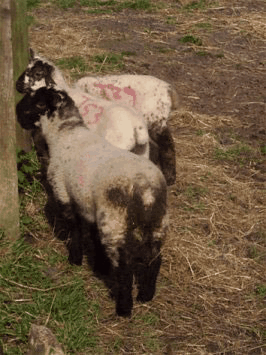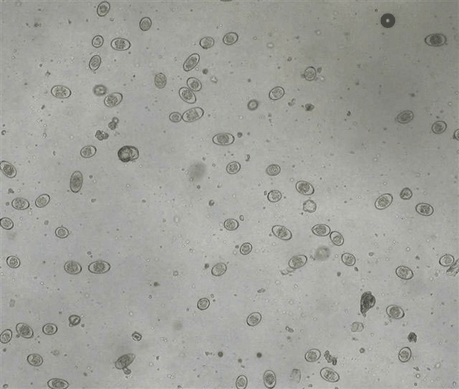NADIS Sheep Disease Focus – June 2006
NADIS is a network of 40 veterinary practices and six veterinary colleges monitoring diseases of cattle, sheep and pigs in the UK.
NADIS data can highlight potential livestock disease and parasite incidences before they peak, providing a valuable early warning for the month ahead.
NADIS disease bulletins are written specifically for farmers, to increase awareness of prevalent conditions and promote disease prevention and control, in order to benefit animal health and welfare. Farmers are advised to discuss their individual farm circumstances with their veterinary surgeon. |
Outbreaks of coccidiosis in sheep are caused by two species of sheep specific protozoan parasites. Following the ingestion of coccidia oocysts from a contaminated environment, the parasite invades and multiplies in the cells of the lining of the intestine. After a period of 2 – 3 weeks oocysts are shed in the faeces, further contaminating the environment.
Under suitable damp conditions many oocysts survive over winter in buildings and on pasture. Oocyst shedding by healthy ewes also contributes to the environmental contamination. Coccidiosis is essentially a disease of intensive husbandry and the severity of disease is proportional to the level of environmental oocyst contamination. Early born lambs may not ingest sufficient oocysts to become clinically affected, but contribute significantly to the contamination of the environment and disease in later born lambs.
Most outbreaks of coccidiosis occur in 3 – 8 week-old lambs, although the disease is also seen in older naïve animals, for example when lambs are weaned onto heavily contaminated small paddocks. The disease is characterised by acute onset diarrhoea, dullness, anorexia, dehydration and weight loss affecting a high proportion of the lamb flock.
The diagnosis of coccidiosis is based on the history of intensive lamb management and clinical signs. The important differential diagnosis is gastrointestinal parasitism, in particular nematodirosis in young grazing lambs. Faecal oocyst counts may support a diagnosis of coccidiosis, but alone are of limited diagnostic value, because many species of coccidia may be present without causing disease. The diagnosis is usually confirmed by post mortem findings.

COCCIDIOSIS IS OFTEN DIAGNOSED IN YOUNG LAMBS ON THE BASIS OF HIGH FAECAL OOCYST COUNTS. HOWEVER, IN MANY CASES THE PRIMARY PROBLEM IS NEMATODIROSIS AND THE PRESENCE OF OOCYSTS IS AN INCIDENTAL FINDING ASSOCIATED WITH NON-PATHOGENIC COCCIDIA

Outbreaks of coccidiosis in lambs are usually managed by whole flock treatment with sulpha drugs and avoidance of intensive grazing. It can be useful to keep later born lambs on different areas to early born lambs.
The coccidiostat drug decoquinate can be included in lamb creep feed for the prevention of coccidiosis, or fed to ewes to reduce their contribution to environmental oocyst contamination. However, this strategy doesn’t enable good development of immunity and there is a danger of disease when the medication is stopped. Diclazuril can be administered orally to lambs as a single preventive treatment in anticipation of a problem. Specific advice on the management of coccidiosis can be obtained from your vet.
Copyright © NADIS 2006 www.nadis.org.uk
| FURTHER INFORMATION | SPONSORS’ LINK |
| • Supporting British Livestock click here |  |
| FURTHER INFORMATION | SPONSORS’ LINK |
| • To find out more about EBLEX, click here |
| FURTHER INFORMATION | SPONSORS’ LINK |
| • To find out more about the HCC click here |
| FURTHER INFORMATION | SPONSORS’ LINK |
| • To find out more about QMS click here |



